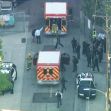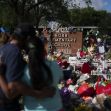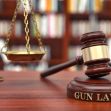On the morning of November 14, 2019, students of Saugus High School gathered in the quad before the start of classes. Nathan Berhow, a student at the Santa Clarita, California, school, reached into his backpack and removed a .45-caliber handgun. Within sixteen seconds, he shot five classmates, killing two and wounding three, before turning the gun on himself. He later died from a self-inflicted gunshot wound to the head. It was his sixteenth birthday.
How did this sixteen-year-old obtain a gun?
California has some of the nation’s strictest gun laws. All firearms purchasers must be at least 18 years of age to purchase a rifle or shotgun and 21 years of age to purchase a handgun. Additionally, gun purchasers must be California residents with a valid driver’s license or identification card from the California Department of Motor Vehicles.
Enter the Ghost Guns
Although Berhow was too young to purchase a gun legally, he was able to obtain one. The gun used in the Saugus shooting was a kit gun, sometimes referred to as a ghost gun. In California, it is legal to buy gun kits online and assemble your own gun without a background check. However, a law passed in 2016 requires a person who has purchased gun parts to apply for a serial number to place on the resulting self-assembled gun.
Similar guns have appeared in recent high profile shootings in California. In 2013, a 23-year-old man fired around 100 rounds using an AR-15 style ghost gun, killing five people in Santa Monica. Two years before the shooting, he was notified by the California Department of Justice that he was ineligible to buy a firearm due to mental health issues and the discovery of bomb-making materials found in his home. A 2017 mass shooting was carried out by an ex-con, who would normally be prohibited from gun ownership. Using a semi-automatic assault rifle ghost gun, the shooter killed four and injured ten at the Rancho Tehama Reserve in Northern California. As recently as August, a homemade semi-automatic assault-style rifle was used to shoot three California Highway Patrol officers in Los Angeles. The shooter had more than 1,300 rounds of ammunition.
What California Gun Owners Should Know
Regarding ownership of kit or ghost guns, it is illegal for any person to destroy or alter the identification marks placed on any firearm, including the make, model, serial number or any distinguishing mark lawfully assigned by the owner or by the DOJ. Additionally, it is illegal for any person to buy, sell or possess a firearm knowing its identification has been destroyed or altered.
What laws are changing?
In Southern California, one-third of all the firearms seized are ghost guns. As the number of these guns is increasing, efforts to increase the regulation of such guns are taking shape. This October, a bill was signed into law which allows only licensed dealers to sell parts used to assemble ghost guns, in addition to requiring a background check. This law takes effect in 2024.
What can be done by school districts to reduce potential liability?
It is illegal for a gun owner to bring a firearm onto the property of any public school, University of California campus, California State University campus, California community college, private school, private university or college within the state of California. Schools and school districts can face liability when a person violates these laws, which are meant to protect people on California campuses from gun violence. Taking reasonable measures to prepare students for emergencies can make a significant impact on reducing a school or school district’s potential liability for negligence regarding security and emergency preparedness training.
The security at Saugus High included one unarmed sheriff’s deputy and nine campus supervisors who act as guards. Also, the campus was surrounded by a fence and had twelve security cameras. Moreover, the parents confirmed that the school’s alert system notified and kept them up to date on the event. There are additional considerations that could have been taken to increase security. First, the school had no metal detectors, which may have detected the gun. Second, having at least one armed sheriff’s deputy may discourage or prevent a potential gunman from carrying out a shooting. However, each school should evaluate whether it is reasonable to employ metal detectors or armed deputies at school.
Saugus High’s district, the William S. Hart Union High School District, takes several measures for gun violence preparedness. All schools in the district hold lockdown drills three times a year, and two drills had already occurred at the time of the shooting. Students reported feeling confident in knowing what to do during the shooting as a result of the drills. Creating and maintaining programs for emergency preparedness and employing security measures and staff are methods to prevent potential liability for negligence in schools when emergencies like shootings occur.






